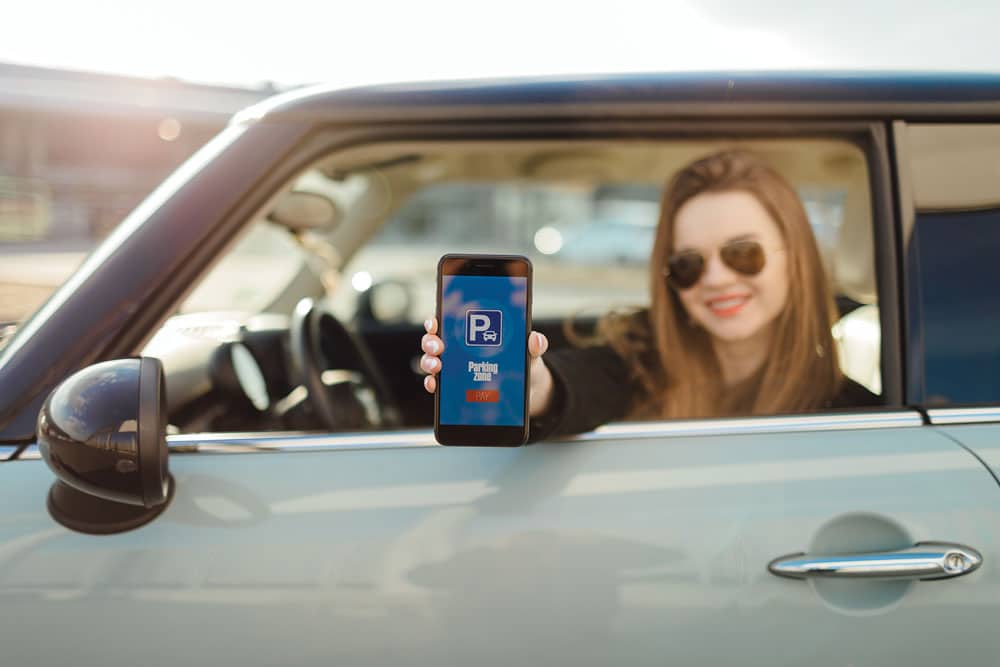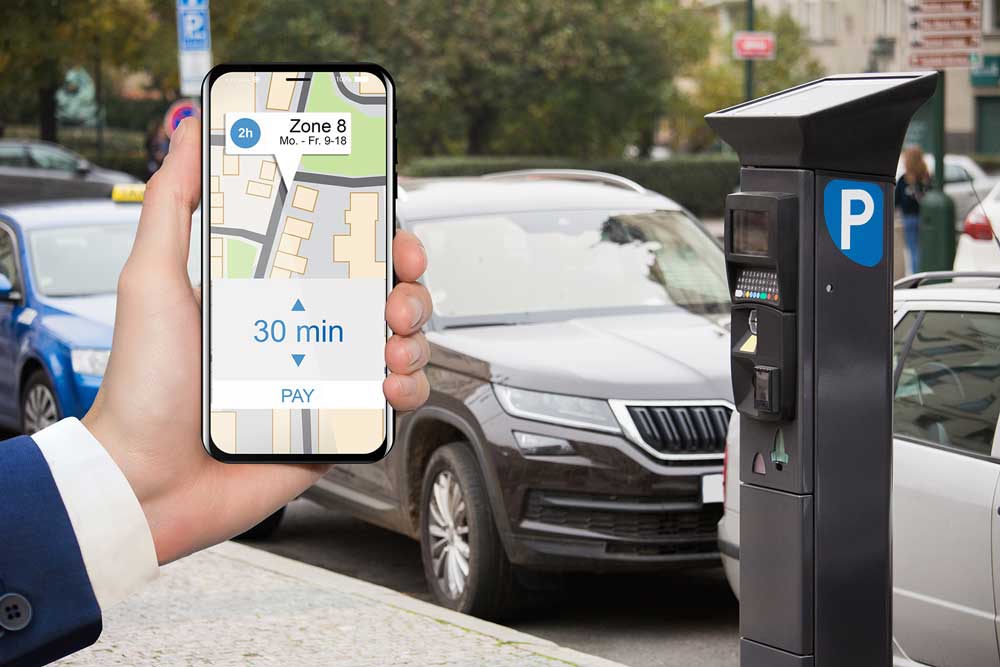An investigation of the the costs and benefits to cashless operations for higher education institutions, and what needs to be considered before making the transition.

Background
Many universities are considering the pros and cons of converting their parking systems to fully cashless operations, and how to serve customers that have either have no access to or no desire to use non-cash payments.
What is “Cashless?” One of the first things noted in our research and our conversations with universities is that there isn’t necessarily a common vocabulary, and there are different definitions of “cashless.” Though the terminology was more similar than we might have expected, cashless may refer to any or all the following:
- Meters that only accept credit cards.
- Meters that accept credit cards and/or mobile payments via a cellphone app (or via telephone/cellphone calls).
- Mobile payment app only—no meters of any kind present.
- Cashless field operations—no coins or bills accepted in any facility or at any of the parking equipment.
- Cashless offices—no cash option at the parking/transportation office for the payment of parking fees or fines.
What does a cashless parking system in a higher education setting look like? For the subjects interviewed, a cashless parking system means no cash is accepted from students or faculty and staff for permits or citations in the parking office, and if there are meters on campus, the meters do not accept cash.
At most universities, faculty and staff can purchase permits and pay citations through payroll deduction or with credit cards, checks, or money orders in the parking office. Students can purchase permits and visitor passes as well as pay for citations either online, in the parking office, or through the bursar’s office. It should be noted that while the parking department is “cashless” the bursar or cashier may or may not still accept cash payments.
Methodology
Walker researched the penetration of cellphones among the U.S. population1 to determine the likelihood of the availability of technology to the users of university parking systems. As mobile/cashless transactions generally require the use of credit or debit cards, we also researched the percentage of unbanked American households. Being “unbanked” refers to people who do not have bank or credit union accounts, and therefore are unlikely to be able to use automated or electronic transactions. For information on the magnitude of these populations, Walker referenced publications from the FDIC2.
We also contacted universities known to have gone partially or completely cashless. The information that we gathered was consistent enough for us to consider what we heard to be indicative. University feedback is incorporated into the findings below.
Findings
Some of the benefits and liabilities of going cashless, especially in the context of institutions of higher education, include the following:
Pros:
- Cellphone market penetration is nearly ubiquitous, with 97% of Americans owning a cellphone of some type; 85% have smartphones.1
- Cellphone ownership is similar across nearly all demographic groups, based on age, ethnicity, or place of residence. The main exceptions are the 65+ age group (94%) and rural residents (92%), with all other groups at 97%-100%.
- Smartphone ownership is lowest among age 65+ (61%), income $30,000 per year or lower (76%), and those with an education of high school or less (75%).
- Most mobile parking payment products offer both a smartphone app and a phone number to pay for parking. Those who lack a smartphone but have a cellphone of some kind have the option to pay without the need for cash.
- Although the use of mobile parking applications requires a payment medium such as a credit or debit card, nearly 95% of U.S. households are banked, or have a bank or credit union account.2
- The demographics of a university skew towards those who are younger, more educated, and more affluent.
- Students adapt quickly to changes in process and technology.
- Cashless meters—meterless, mobile-pay-only operations—reduce the labor associated with jams, repairs, and cash collection.
- Having fully cashless operations eliminates the time and labor associated with cash reconciliation and lowers audit risk and fraud.
- On a university campus, there are generally options for the processing or collection of payments outside of a parking/transportation office, such as a bursar, cashier, payroll, etc.
Cons:
- A percentage of the US population does not have cellphones (3%) or smartphones (15%). The likelihood of cellphone ownership is lowest among senior citizens, rural residents, and the poor.
- Approximately 5% of the US population are unbanked, meaning they have neither credit nor debit cards. This represents over seven million households.
- While day-to-day arrivals to campus—faculty, staff, students, prospective students, vendors, etc.—are likely to have smartphones and to be banked, visitors to attractions and special events, including cultural events, may be less likely to have these characteristics.
- Certain populations are less tech-savvy and may have difficulty with mobile payment activities, even if they own the appropriate technology.
- Some people may not prefer to download an app. Multiple apps may be necessary if the patron needs to use mobile payments in more than one jurisdiction.
- Customers may simply prefer the option of using cash to park and may view a cashless-only operation as not being customer-service friendly.
While the secondary reasons for transitioning to a cashless parking system vary from institution to institution, the primary impetus for the change includes cost and convenience. Campus visitors using meters prefer to pay with credit cards or mobile apps. As hourly rates rise, advances in technology make it easier to go cashless. Even before their transitions, many institutions noted that the cost of collecting the coins and bills from meters often exceeded the dollar value collected. Like the situation at meters, cash payments in the parking office itself were also dwindling before the universities transitioned to cashless systems. Eliminating cash payments not only reduced liability but also freed up personnel in departments that may already have been short-staffed.
While for some universities the pandemic may have hastened the transition to cashless systems, many had already made the change or were considering the change prior to 2020. Research showed that the amount of time each institution had been cashless varies from one year to 10 years, with most making the transition successfully. A key factor to success was a strong marketing campaign and public support during the initial transition.
Recommendations
Based on our experience with university clients, it is possible to go cashless. However, there are items to assess when doing so:
- Who are your users?
- Do you attract a lot of off-campus visitors? Are they seniors, low-income, and/or from rural areas?
- How many cash transactions does the department currently process in the office and in the field? What percentage do these represent?
- At locations where there is an option (e.g., credit card/cash), what is the ratio of use of each medium?
- Are offices such as Bursar, Cashier, and Payroll equipped and prepared to support the department?
Our recommendation is a phased approach to going cashless, focusing first in the field where the risks of tampering, the maintenance burdens, the effort of cash collection, and audit trail risks are the highest. With successful implementation of cashless parking facilities, the initiative can be expanded to office operations.
- In all cases, communication and marketing are key to helping people understand what to expect, and how to use credit card/mobile pay and mobile-pay-only facilities. If appropriate, list/map the facilities that still accept cash.
- Begin with pilot programs in areas in which you can add mobile payments as an option, allowing the university to measure the change in payment behaviors to get a baseline of how many cash transactions are processed, versus credit card, versus mobile payment apps.
- Start with areas predominantly used by students.
- In locations in which you go completely cashless, provide information and wayfinding to help people find their remaining cash-pay options.
- There is little to no cost associated with introducing more than one mobile application. Providing choices will make it easier for customers who have already downloaded one app, without requiring them to download an additional one.
- If the office does go cashless, accepting credit cards, checks, and money orders will accommodate most customers.
- Seek the support of the Bursar or the Cashier for taking cash payments for permits and citations. Engage Payroll to make payroll deduction as payment for staff and faculty permits and citations.
- Customers who do not have smartphones can use a cellphone to call and use an automated system to pay for parking.
- Customers who are unbanked would have to purchase their parking privileges at the parking office.
- If the parking office is also cashless, customers who are unbanked may have to use cash to purchase payment media such as pre-loaded debit cards or money orders at grocery or big-box retail stores. Again, communication and good signage are critical.
Going cashless is possible, but we recommend a phased approach, collection of data metrics, good customer communications, and strong partnership with other campus departments. ◆
References
- Demographics of Mobile Device Ownership and Adoption in the United States, Pew Research Center, 2021
- Federal Deposit Insurance Corporation (FDIC), 2021
stock.adobe.com / scharfsinn86





